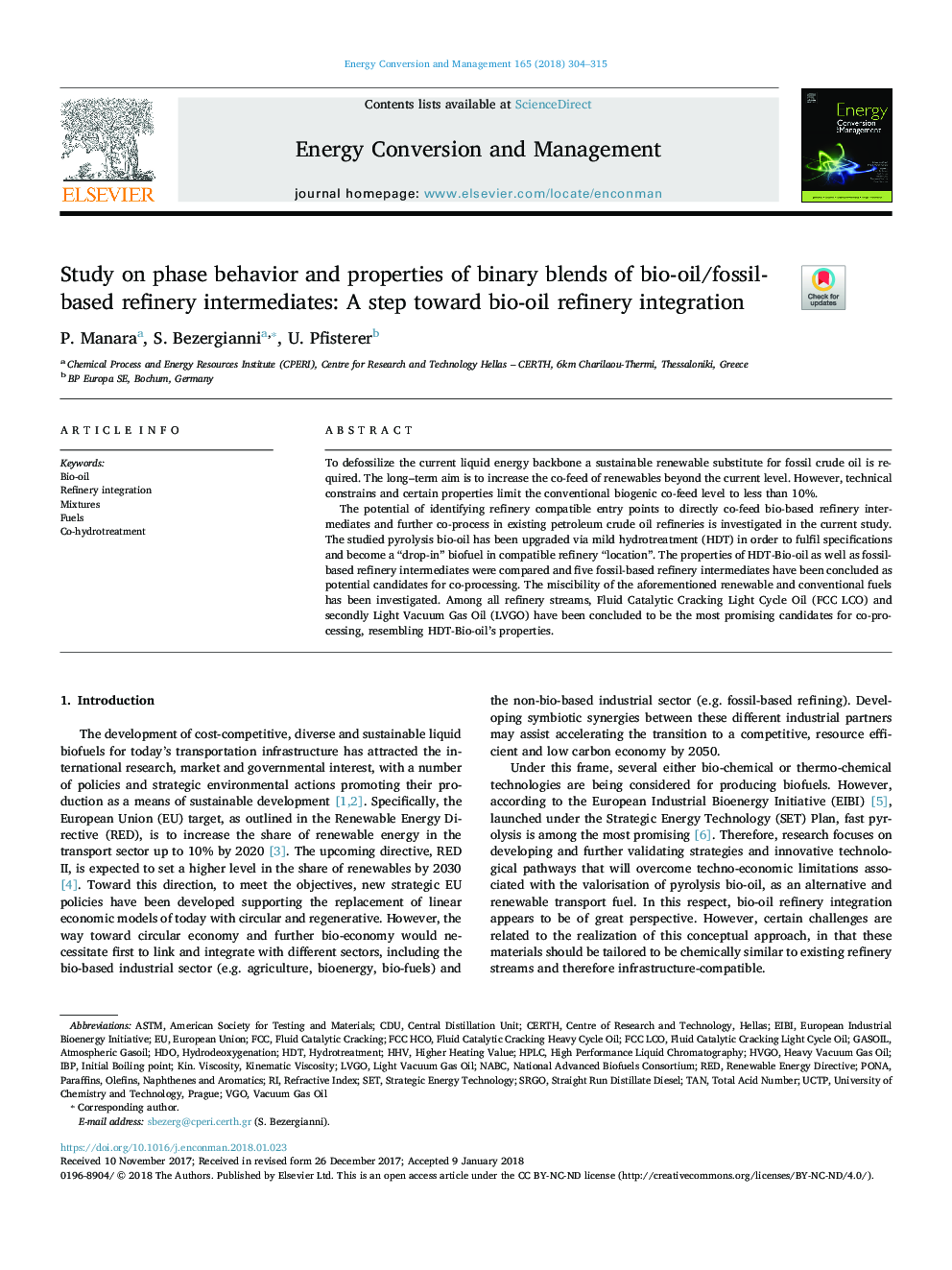| Article ID | Journal | Published Year | Pages | File Type |
|---|---|---|---|---|
| 7158619 | Energy Conversion and Management | 2018 | 12 Pages |
Abstract
The potential of identifying refinery compatible entry points to directly co-feed bio-based refinery intermediates and further co-process in existing petroleum crude oil refineries is investigated in the current study. The studied pyrolysis bio-oil has been upgraded via mild hydrotreatment (HDT) in order to fulfil specifications and become a “drop-in” biofuel in compatible refinery “location”. The properties of HDT-Bio-oil as well as fossil-based refinery intermediates were compared and five fossil-based refinery intermediates have been concluded as potential candidates for co-processing. The miscibility of the aforementioned renewable and conventional fuels has been investigated. Among all refinery streams, Fluid Catalytic Cracking Light Cycle Oil (FCC LCO) and secondly Light Vacuum Gas Oil (LVGO) have been concluded to be the most promising candidates for co-processing, resembling HDT-Bio-oil's properties.
Keywords
ASTMHHVIBPTANHDOCDUHDTVGOEIBIFCCSRGOMixturesEuropean UnionKinematic viscosityFluid catalytic crackingSETAmerican society for testing and materialsHydrotreatmentRenewable Energy DirectiveBio-oilREDFuelsGasoilTotal Acid NumberRefractive indexVacuum gas oilInitial boiling pointHydrodeoxygenationponAhigh performance liquid chromatographyHPLCHigher heating value
Related Topics
Physical Sciences and Engineering
Energy
Energy (General)
Authors
P. Manara, S. Bezergianni, U. Pfisterer,
